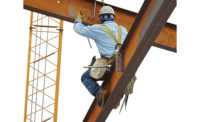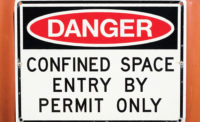OSHA requirements
Subpart C of 29 CFR 1926 simply says, “The employer shall permit only those employees qualified by training or experience to operate equipment and machinery.” [1926.20(b)(4).]
This requirement lays the groundwork for employers to provide appropriate safety training for workers, but it is just the beginning. OSHA goes on to say:
“Standards in this part requiring training on hazards and related matters, such as standards requiring that employees receive training or that the employer train employees… impose a separate compliance duty with respect to each employee covered by the requirement. The employer must train each affected employee in the manner required by the standard, and each failure to train an employee may be considered a separate violation.” [(1926.21(f)(2)].
This allows OSHA to issue a citation to the employer for each failure-to-train violation, which can add up quickly.
The training requirements are further clarified later in Subpart C, “The employer shall instruct each employee in the recognition and avoidance of unsafe conditions and the regulations applicable to his work environment to control or eliminate any hazards or other exposure to illness or injury.” [1926.21(b)(4)].
However, the training mentioned in Subpart C is not the only training that employers must provide. OSHA stipulates numerous additional training requirements throughout the 1926 construction standards by requiring that employees receive training on specific topics. One example is in Subpart M, Fall Protection, which says:
“The employer shall provide a training program for each employee who might be exposed to fall hazards. The program shall enable each employee to recognize the hazards of falling and shall train each employee in the procedures to be followed in order to minimize these hazards.” [1926.503(a)(1).]
What format or types of training are appropriate?
Training for construction workers can be delivered in various ways: Classroom, on-the -job, interactive, video-based and hands-on.
Does this mean that an employer can simply show a safety video to trainees and then have them sign off that they received the training? OSHA addresses this very question in a Letter of Interpretation (LOI) dated August 3, 1999:
“The instruction that employers must provide under §1926.21 must be tailored to the employees’ language and level of education, the hazards its employees will encounter, and convey the required information. In short, we consider this standard to require effective training. While itdoes not expressly require training that is interactiveand hands-on, it is often more difficult to provideeffective training that lacks these elements.
In some cases it would be extremely difficult, if not impossible, to provide effective training in the absence of site-specific instruction, especially with respect to hazards such as confined spaces. Hands-on training may also be essential at times,especially when training on hazards associatedwith equipment.” [Author’s note: Italics added for emphasis].
The topic of the specific training will determine how it best be delivered. Whatever format you use, make sure you tailor the training to the audience.
In what language must training be provided?
With all the different languages spoken on jobsites, and the varying levels of employee comprehension, construction employers often have a difficult time providing appropriate training. A question often asked is if training can be provided in English only, or does it have to be given in other languages as well?
OSHA addresses this in a LOI dated July 26, 2010:
“While there are construction standards that require training and instructions, there are no
OSHA construction standards that specifically require that such information be conveyed and understood in English.
In addition, it is common that, for safety reasons, construction employees need to be able to communicate with supervisors and co-workers. However, an OSHA obligation in that regard would be met by any system in which that communication could reliably occur; there is no OSHA requirement that the communication system be based on the English language.”
What will OSHA compliance officers look for?
OSHA Compliance Safety and Health Officers have been provided with specific instructions on what to look for regarding employee training comprehension. There are two areas of concern:
• Employers must instruct employees in a language they can understand, and
• Employers must use a level of vocabulary that employees can comprehend.
OSHA’s Training Standards Policy Statement, dated April 28, 2010, states, “For example, if the employee does not understand English, instruction must be provided in a language the employee understands.”
Also mentioned in the policy statement is that, “CSHO’s should look to whether workplace instructions regarding job duties are given in a language other than English and determine whether the employer is already transmitting information with comprehensibility in mind.”
Providing other training or work instructions in a language other than English essentially necessitates providing safety training in the same language.
Final thoughts
Construction companies are required to provide a safe work environment for all workers, regardless of the employee’s language or level of comprehension. An effective safety training program can be the first step in that direction.


